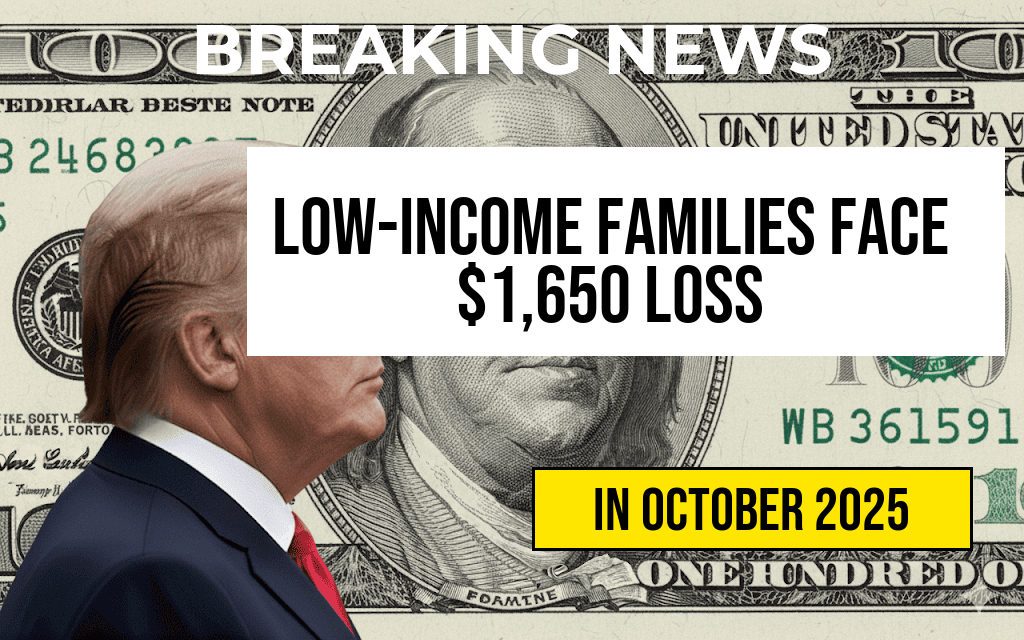Low-income families across the United States are set to experience significant financial impacts due to recent policy adjustments, with potential income reductions reaching up to $1,650 annually. The changes, which stem from modifications to eligibility criteria for various assistance programs and adjustments in tax credits, are expected to tighten the financial safety net for millions of households already operating on tight budgets. The policy shifts come amid ongoing debates over fiscal responsibility and social welfare priorities, raising concerns among advocates who warn that the most vulnerable populations may bear the brunt of these reforms. As the details of these changes unfold, affected families are grappling with uncertainty about how their monthly budgets and long-term financial stability will be impacted.
Details of the Policy Changes
Adjustment in Income Eligibility Thresholds
The new policies primarily alter the income eligibility thresholds for federal assistance programs such as the Supplemental Nutrition Assistance Program (SNAP) and Temporary Assistance for Needy Families (TANF). These thresholds determine which families qualify for support, and tightening them effectively reduces the number of households eligible for aid. According to recent government notices, many families earning just above the previous cutoff points will now find themselves ineligible, eliminating access to critical resources.
Revisions to Child Tax Credits
One of the most impactful changes involves the phase-out of certain Child Tax Credits (CTC). The expanded CTC introduced during the COVID-19 pandemic provided direct payments to families with children, significantly alleviating financial pressure. The current policy rollbacks mean that families claiming the credit will see a reduction in their annual benefits, translating to roughly $150 to $200 less per month for some households. For families with multiple children, this cumulative loss can approach the $1,650 mark annually.
Impact on State and Local Assistance
Beyond federal programs, several states have also announced changes to their local support initiatives, often aligning with federal policies. These modifications include stricter income verification processes and reduced benefit caps, further limiting assistance for low-income families. The combined effect of federal and state policy adjustments is expected to intensify financial strain on vulnerable populations.
Projected Financial Impact on Families
| Family Size | Previous Annual Support | New Support | Estimated Reduction |
|---|---|---|---|
| 2 Children | $24,000 | $22,350 | $1,650 |
| 1 Child | $20,000 | $18,400 | $1,600 |
| No Children | $18,000 | $16,350 | $1,650 |
- Food Security: Reduced SNAP benefits may lead to increased food insecurity, forcing families to cut back on nutritious meals.
- Housing Stability: Less assistance could result in difficulties maintaining housing, raising the risk of eviction for some families.
- Child Well-being: Decreased support can impact access to healthcare, education, and extracurricular activities, affecting children’s development.
Community and Political Reactions
Advocates’ Concerns
Community organizations and advocacy groups have voiced strong opposition to the policy changes, arguing that they disproportionately affect the most vulnerable segments of society. Experts warn that such reductions could deepen existing inequalities, hinder children’s educational outcomes, and increase reliance on emergency services.
Government Justifications
Proponents of the reforms contend that tightening eligibility is necessary to ensure the sustainability of social safety programs amid budget constraints. Officials argue that the policy adjustments promote fiscal responsibility and prevent dependency on government support, emphasizing a shift toward encouraging self-sufficiency.
Looking Ahead
The full impact of these policy changes will unfold over the coming months as families adjust their budgets and local agencies implement new eligibility criteria. While some families may find ways to adapt, many face the challenge of balancing essentials with reduced aid. Policymakers and community leaders continue to debate the long-term implications, with ongoing discussions on how to support low-income households while maintaining fiscal discipline.
For more information on federal assistance programs and recent policy updates, visit USDA’s SNAP Program and HHS Child Tax Credit Resources.
Frequently Asked Questions
What are the key changes in the new policy affecting low-income families?
The new policy results in an income reduction of up to $1,650 for low-income families by adjusting eligibility criteria and benefit calculations, impacting their financial support and assistance programs.
Who is affected by the recent policy changes?
Low-income families and individuals who rely on government aid and benefits are most affected, as the policy shift reduces their income support significantly.
How does the income reduction impact families’ daily lives?
The reduction in income may lead to challenges in covering essential expenses such as housing, food, and healthcare, potentially increasing financial strain on affected families.
Are there any options or programs to help mitigate the income loss?
Yes, affected families can explore additional assistance programs, community resources, or eligibility for other forms of financial aid to help offset the income reduction.
When will the new policy changes take effect?
The policy updates are set to take effect starting from the upcoming fiscal quarter, giving families some time to prepare for the financial adjustments.

Leave a Reply